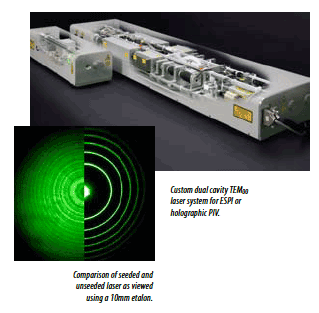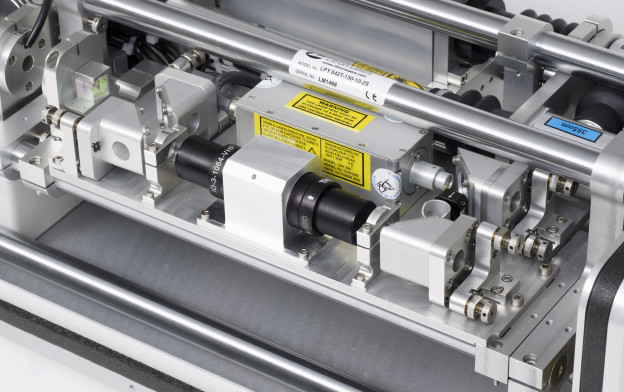Pulsed Nd:YAG lasers running on a single longitudinal mode (SLM) have been around for over twenty years. Their long temporal coherence length of typically 2-3m make them very well suited for applications such as holography and electronic speckle pattern interferometry (ESPI).
Since the spatial modes in practical lasers all have slightly different optical frequencies, SLM lasers require operation on a single transverse mode.
For high energy, unstable resonators may be injection seeded to get single longitudinal mode operation but diffraction effects of a large single transverse mode make these unsuitable for many holographic applications and especially ESPI. The diffraction in the laser ruins the spatial coherence of the beam, even though good temporal coherence is maintained.

For the most demanding applications, Litron offers true TEM00 lasers using a stable telescopic resonator and an aperture to get single transverse mode operation (also see technical notes about resonator options and TEM00 or not). These have the advantages of both uniform illumination of the object and excellent spatial and temporal coherence characteristics.
TEM00 lasers have proven their worth in the most demanding ESPI applications where Gaussian coupled unstable resonators have been shown to give poor spatial coherence and thus largely unusable interferograms.
The author likes to think of the phase fronts in a laser beam as pieces of very thin paper propagating one wavelength apart. In a multiple transverse (and thus multiple longitudinal mode) laser, there are large numbers of little pieces of paper propagating with no particular phase relationship. In an unstable single longitudinal mode laser, we can consider single sheets across the beam but they are badly crumpled by diffraction and thus there is no particular phase relationship from one side of the beam to the other. In a true TEM00 system, the sheets are uniform across the beam and almost perfectly smooth, thus maintaining a constant phase relationship across the beam.
True TEM00 lasers are larger and more expensive than an unstable laser giving the same energy. However, for some applications, the TEM00 laser makes the difference between useful and useless experimental data.
For more information visit: http://www.litronlasers.com/pages/injection_seeded_lasers.html
